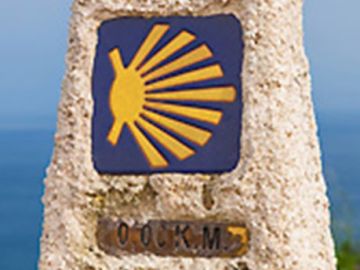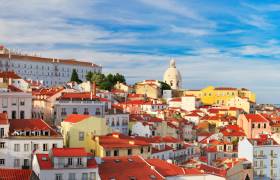Winding between the jagged spires of the French Pyrenees before threading its way west across Northern Spain to the Atlantic Coast, the Camino de Santiago is well and truly scuffed by the footprints of time. The Camino de Frances, The Way of St James, El Camino de Santiago, or simply The Way, this historic trail bears witness to over a thousand years of pilgrimage… During the Middle Ages, kings, queens, knights and saints from many nations made the pilgrimage along the Camino to the Cathedral de Compostela where, as legend has it, the remains of the apostle, St James the Greater are buried. Directing pilgrims through rural enclaves, undulating wine country and the Galician Mountains to Santiago, the trail’s waymark icon – the scallop shell – is said to represent the coming together of pilgrims from all walks of life with one common goal: to pay homage to St James.Times have changed somewhat. ‘Pilgrims’ no longer have to walk the whole arduous route, now a protected UNESCO treasure, from mountain to coast and suffer the humble offerings of the remote refuge shelters. Nowadays, though people still travel far and wide to walk (or ride) The Way, many opt to follow just the most scenic final stages of the route to earn their compostela (a Pilgrim’s stamped passport).
During the Middle Ages, kings, queens, knights and saints from many nations made the pilgrimage along the Camino to the Cathedral de Compostela where, as legend has it, the remains of the apostle, St James the Greater are buried. Directing pilgrims through rural enclaves, undulating wine country and the Galician Mountains to Santiago, the trail’s waymark icon – the scallop shell – is said to represent the coming together of pilgrims from all walks of life with one common goal: to pay homage to St James.Times have changed somewhat. ‘Pilgrims’ no longer have to walk the whole arduous route, now a protected UNESCO treasure, from mountain to coast and suffer the humble offerings of the remote refuge shelters. Nowadays, though people still travel far and wide to walk (or ride) The Way, many opt to follow just the most scenic final stages of the route to earn their compostela (a Pilgrim’s stamped passport).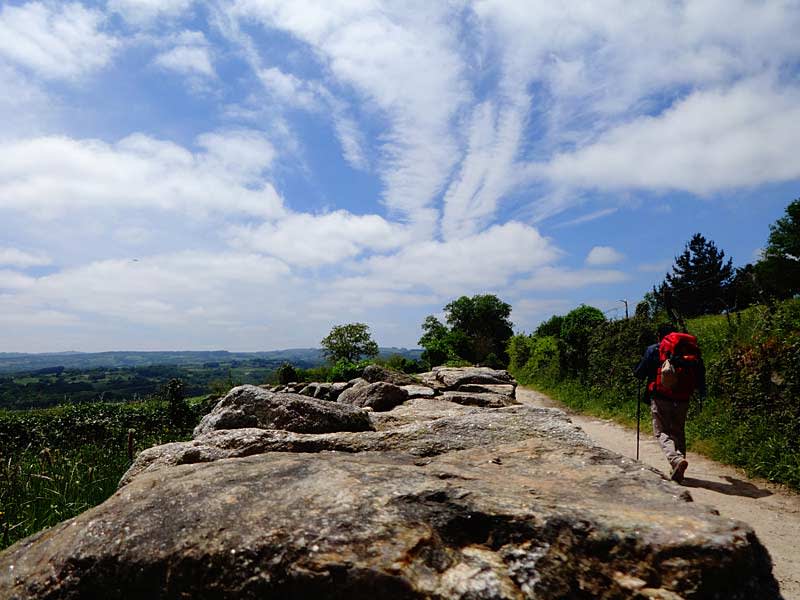 Everyone embarking on a Camino pilgrimage does so for their own reasons; whether for spiritual enlightenment, the chance to detach from the modern world for short time, adventure, or to tick off a bucket list icon – the Camino de Santiago is a personal journey. After the huge success of our small group Camino tours, we have expanded our range and introduced two new self-guided itineraries for those looking for a little more flexibility, freedom and independence along The Way.
Everyone embarking on a Camino pilgrimage does so for their own reasons; whether for spiritual enlightenment, the chance to detach from the modern world for short time, adventure, or to tick off a bucket list icon – the Camino de Santiago is a personal journey. After the huge success of our small group Camino tours, we have expanded our range and introduced two new self-guided itineraries for those looking for a little more flexibility, freedom and independence along The Way.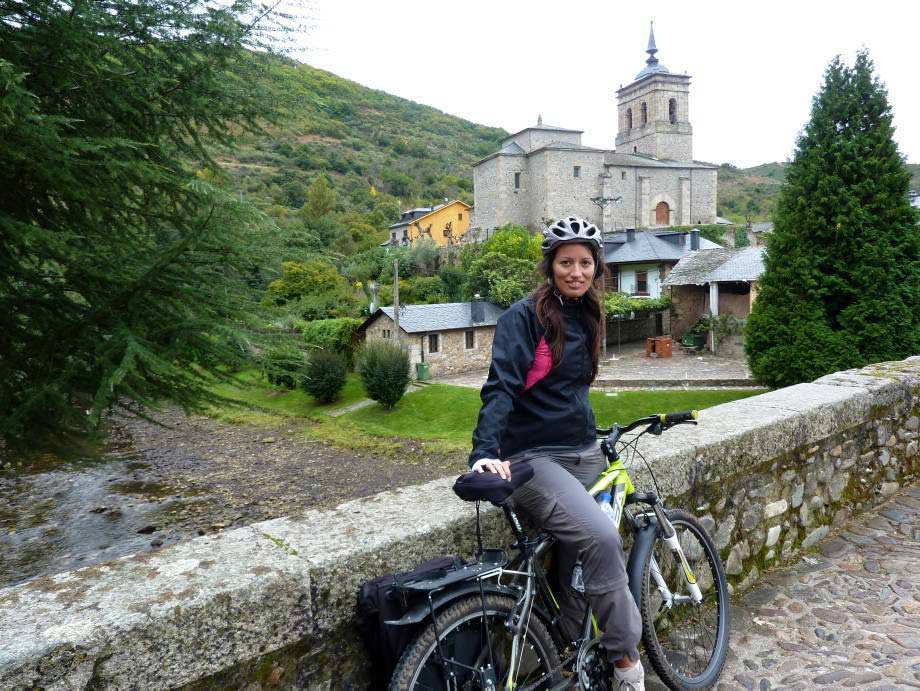 You can stick with tradition and head out on your pilgrimage on foot. Starting out at Cruz de Ferro, you’ll ascend through the Rio Valcarce Valley and trek to the pretty hillside village of O’Cebreiro in time to watch the sun dip and bathe the Galician landscape below in golden glow. The following days will take you through Sarria, the antiques capital of Galicia, along the Celerio Valley and past Montes del Vacaloura en route to Melide. After staying in in a beautifully converted watermill in Rua for the night, you will head up to Monte de Gozo (Mount of Joy) for your first sight of Santiago’s seminal spires.
You can stick with tradition and head out on your pilgrimage on foot. Starting out at Cruz de Ferro, you’ll ascend through the Rio Valcarce Valley and trek to the pretty hillside village of O’Cebreiro in time to watch the sun dip and bathe the Galician landscape below in golden glow. The following days will take you through Sarria, the antiques capital of Galicia, along the Celerio Valley and past Montes del Vacaloura en route to Melide. After staying in in a beautifully converted watermill in Rua for the night, you will head up to Monte de Gozo (Mount of Joy) for your first sight of Santiago’s seminal spires.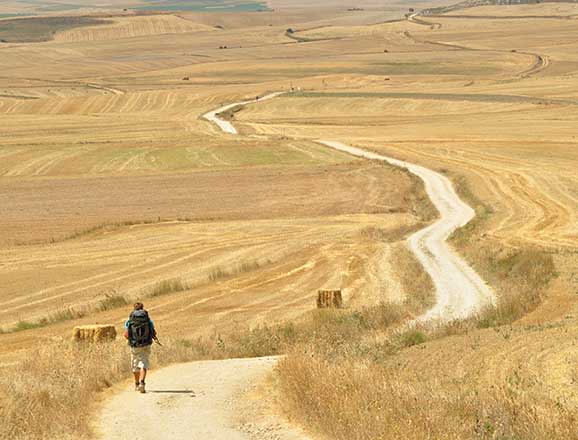 Alternatively, saddle up and tackle the trail under pedal power starting out from Astorga. We have chosen a route to bring you closer to the region’s finest cultural landmarks; cycle to Molinaseca via the Iron Cross (1,505m) and onto Samos to see one of Spain’s most beautiful monasteries. Cycle through remote villages and arable lands to Palas de Rei before the ride takes you through the undulating Galician countryside to your ultimate destination.
Alternatively, saddle up and tackle the trail under pedal power starting out from Astorga. We have chosen a route to bring you closer to the region’s finest cultural landmarks; cycle to Molinaseca via the Iron Cross (1,505m) and onto Samos to see one of Spain’s most beautiful monasteries. Cycle through remote villages and arable lands to Palas de Rei before the ride takes you through the undulating Galician countryside to your ultimate destination.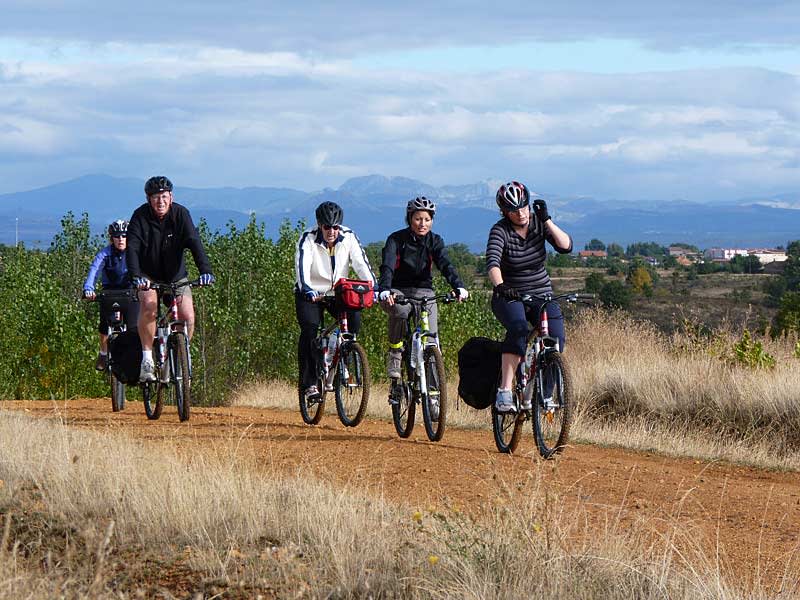 Whether you choose to arrive on foot or on two wheels, both of our self-guided Camino holidays culminate in Santiago de Compostela where you will be able to visit the Romanesque cathedral and collect your compostela from the Pilgrim’s Office. Staying in comfortable hotels and charming guesthouses throughout, there’s no roughing it after a day on the Camino with Exodus! And being on a self-guided trip means you can decide when and where to eat each evening. No agenda or group timetables to stick to, just your own pace. You do not even have to worry about lugging your bags from place to place as we’ll do all that for you. So now you can follow The Way your way, all you need to do is decide whether to do your pilgrimage on foot or two wheels, in company or alone. The choice is yours!
Whether you choose to arrive on foot or on two wheels, both of our self-guided Camino holidays culminate in Santiago de Compostela where you will be able to visit the Romanesque cathedral and collect your compostela from the Pilgrim’s Office. Staying in comfortable hotels and charming guesthouses throughout, there’s no roughing it after a day on the Camino with Exodus! And being on a self-guided trip means you can decide when and where to eat each evening. No agenda or group timetables to stick to, just your own pace. You do not even have to worry about lugging your bags from place to place as we’ll do all that for you. So now you can follow The Way your way, all you need to do is decide whether to do your pilgrimage on foot or two wheels, in company or alone. The choice is yours!
See all Camino de Santiago trips.
